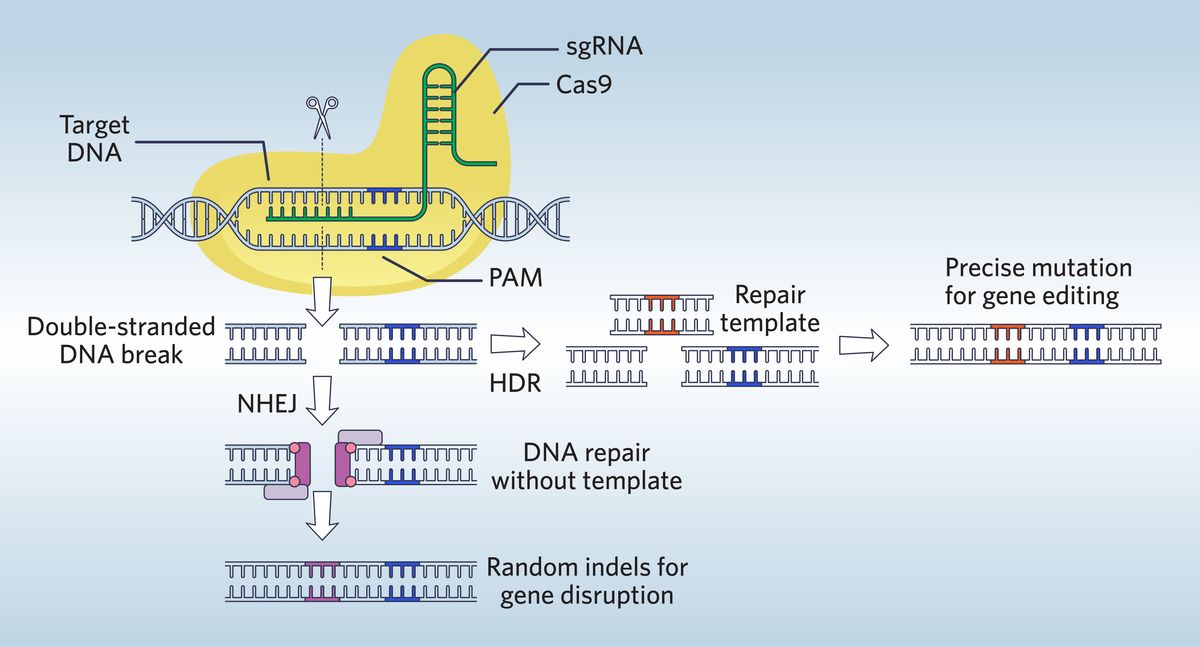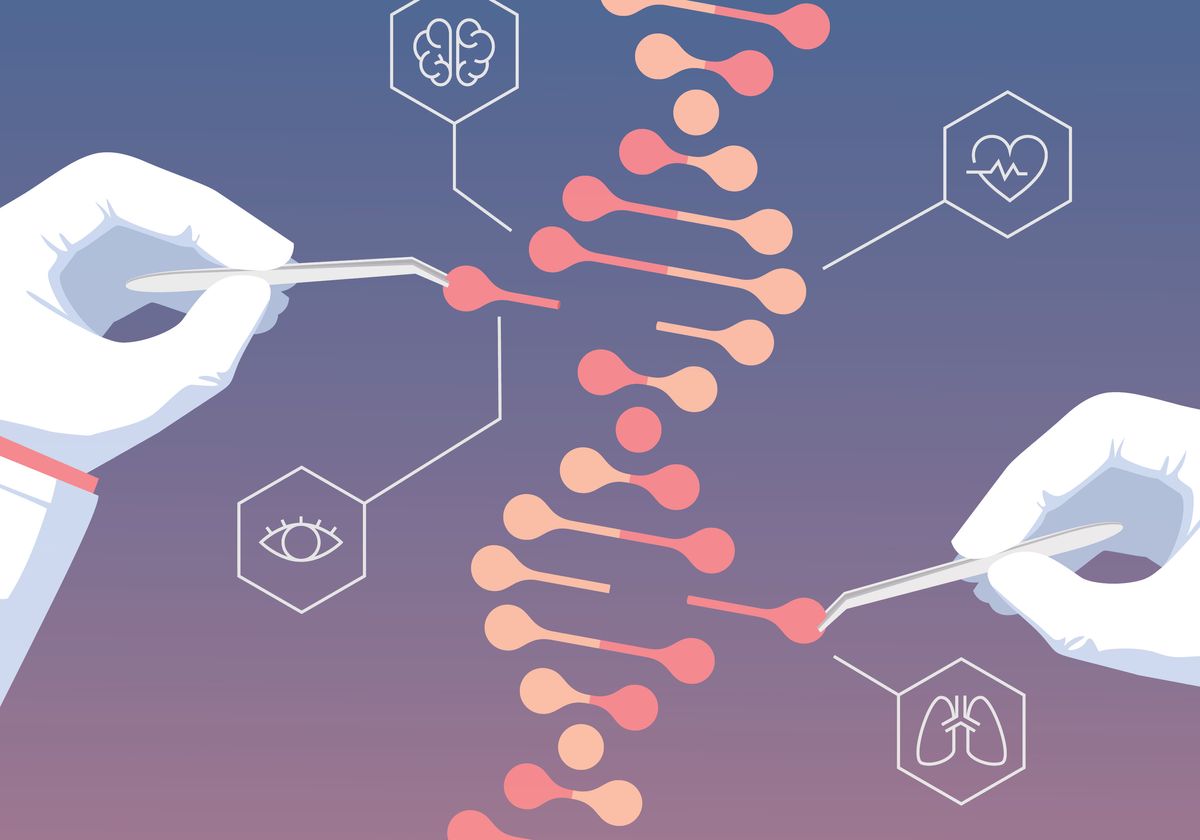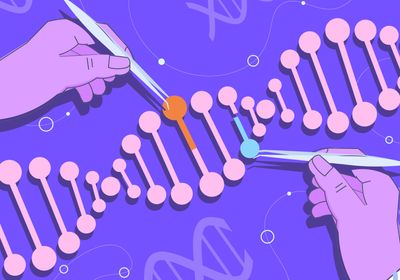ABOVE: An examination of CRISPR-based tools highlights the hurdles overcome and the advancements made by scientists to enhance this pivotal technology in life sciences. ©istock, gmast3r
About a decade ago, CRISPR, short for clustered regularly interspaced short palindromic repeats, was catapulted from the humble realms of adaptive bacterial immunity to centerstage in genome editing when researchers discovered that they could repurpose elements of the prokaryotic immune system to cleave DNA and modify genes in human cells.1,2 Seemingly overnight, the CRISPR-based system revolutionized and democratized the field by offering a more user-friendly and precise method for site-specific modifications. Now, CRISPR-based genome editing systems are advancing research across the life sciences. However, to address current limitations and expand its applications, scientists continue to modify the technology.
CRISPR Expands Beyond Cas9 Nuclease

Like the human immune system, bacteria learn from past infections. CRISPR sequences—short snippets of DNA from previous viruses—guide destructive enzymes towards invading bacteriophages that express the same genetic fingerprint. Scientists realized that they could edit and disrupt gene function in eukaryotes by engineering customizable short guide RNA to direct the enzymes to introduce cuts at specific points in the genome. Cas9, the first Cas protein repurposed for cutting DNA, introduces double-strand breaks that recruit DNA repair machinery. Despite its successes, the CRISPR-Cas9 system has several limitations, including off-target cutting. Over the years, scientists have explored alternatives to Cas9, such as Cas12a for more precise multigene editing, a type III CRISPR for RNA editing, and a Cas13 loaded with multiple guide RNAs for multiplexed targeting.
Learn more about CRISPR in this summary article.
Avoiding CRISPR Off-Target Effects by Tweaking the Timing of Edits
Double-strand DNA breaks not only open the door to unwanted, off-target editing, but their improper repair can lead to additional safety concerns when it comes to using CRISPR-Cas9 systems, which have already reached patients. Researchers using CRISPR-Cas9 gene editing tools have discovered that while this technology can enhance T cell cancer therapies, it may also lead to unintended chromosomal loss in the edited immune cells. Biochemist Jennifer Doudna and her team at the University of California, Berkeley found that chromosome loss occurred for nearly 90 percent of all genes targeted. By exploring single cell RNA-sequencing data from clinical trials using CRISPR-Cas9 engineered T cells, the researchers found that a clinical trial using a different protocol, where scientists edited cells prior to their activation, showed no evidence of chromosome loss, highlighting how timing matters.
Continue reading about off-target effects in this story.
Base and Prime Editing Offer Precision
CRISPR-based systems that rely on traditional Cas nucleases like Cas9 cut through both strands of DNA which can lead to undesirable and even dangerous edits to the genome. In contrast, systems that use modified or catalytically impaired Cas proteins are less active and only introduce single-strand breaks, or nicks, in the DNA. Base editing is a genome editing system that uses an impaired Cas protein to chauffeur enzymes that create single point mutations, such as swapping an adenine for a guanine, at a specific location in the DNA. With recent advances in base editing, researchers can now simultaneously introduce multiple base edits, expanding the tools’ applicability to genetic diseases characterized by multiple mutations.

Prime editing, a relative newcomer to the gene editing space, uses a modified Cas protein and a guide RNA to recruit a reverse transcriptase to a specific sequence on the target DNA strand.
Although early iterations of the editor focused on short (tens of base pairs long) insertions or deletions, scientists are now exploring systems for gene-sized integrations and deletions for precision gene editing. Prime editing is popping up across the life sciences, including high-throughput libraries for studying cancer genetics and novel systems for tracking gene expression in cells.
Explore prime editing further in this article.
Base and Prime Editors Still Carry Risks
Researchers at the San Raffaele Scientific Institute found that while base and prime editing reduced undesired mutations relative to CRISPR-Cas9, they still generated some mutations, particularly at nicked sites. For example, the team detected mutations that suggest these new editors can still induce accidental double-strand DNA breaks and produce genotoxic byproducts, such as additional deletions or translocations. Furthermore, the longer guide RNAs used in base editors can trigger immune responses. The researcher’s risk-benefit analysis of genome editing tools highlights the need for ongoing optimization of these technologies' safety profiles before widespread clinical application.
Discover additional insights on the risks of gene editing tools in this story.
Assessing the Safety of CRISPR-Based Technologies
Rather than use CRISPR-based technologies to edit laboratory animals or human cells in a dish, Kevin Esvelt, a biologist at the Massachusetts Institute of Technology, is taking the technology into the wild to alter the trajectory of evolution. To easily and stably introduce a desired trait into wild organisms, such as tinkering with the mosquito genes to eliminate malaria and ensure that the edited gene is passed to all offspring, Esvelt developed a CRISPR gene drive system. However, Esvelt quickly realized the immense power and potential dangers of such technology, as it could be misused to cause harm, like editing the mosquito genome to introduce a new disease. Despite these concerns, he believes that the technology favors defense and advocates for its responsible use, emphasizing the need for public trust to ensure its ethical application.

Continue reading about CRISPR gene drives in the full profile.
CRISPR-based technologies continue to advance gene editing, but they still face many challenges, such as reducing off-target effects and adverse immune responses. In addition to ongoing efforts to enhance gene editing precision, researchers are improving the delivery systems used for CRISPR gene therapies and exploring novel research applications for these technologies, including CAR T cell screening platforms and molecular farming.
- Jinek M, et al. A programmable dual-RNA-guided DNA endonuclease in adaptive bacterial immunity. Science. 2012;337(6096):816-821.
- Mali P, et al. RNA-guided human genome engineering via Cas9. Science. 2013;339(6121):823-826.


